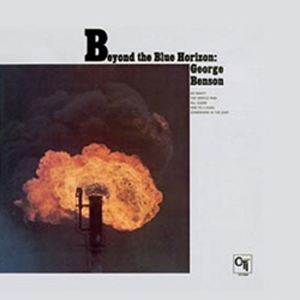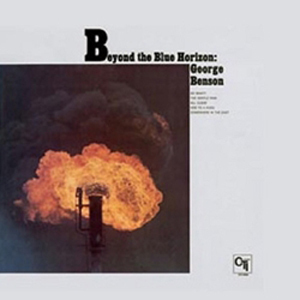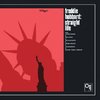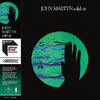SORRY - SOLD OUT
AAA 100% Analogue This LP was Remastered using Pure Analogue Components Only from the Master Tapes through to the Cutting Head
Speakers Corner / CTI - CTI 6009 - 180 gram Virgin Vinyl - AAA 100% Analogue
Limited Edition - Pure Analogue Audiophile Mastering - Pressed at Pallas Germany
Speakers Corner 25 Years Pure Analogue This LP is an Entirely Analogue Production
A must-hear for all aficionados of Benson's guitar. an excellent choice for reissue and highly recommended - HIFI + Review
George Benson was the pupil, Wes Montgomery his teacher! And the sound of the great maestro, who played without the use of a plectrum, is quite unmistakable in this recording produced by CTI Records with George Benson in 1971. Producer Creed Taylor showed good judgement when he teamed Benson up with a small yet supremely talented group of musicians: Jack De Johnette on the drums takes Ron Carter’s bass and Clarence Palmer’s organ on a superb ride. Carter and Benson had met one another briefly during a Miles Davis recording session, but there the drummer was Tony Williams. Here, with Jack DeJohnette participating, the numbers on this LP gain real soul. But the lyrical side doesn’t come too short either: "Ode To A Kudu" demonstrates this particular attribute of Benson’s to perfection. And "Somewhere To The East" proves that he isn’t afraid to experiment. All in all, this is a top album from George Benson’s long and commercially successful career.
Having taken Benson along with him when he founded CTI, Creed Taylor merely leaves the guitarist alone with a small group on his first release. The payoff is a superb jazz session where Benson rises to the challenge of the turbulent rhythm section of Jack DeJohnette and Ron Carter, with Clarence Palmer ably manning the organ. Benson is clearly as much at home with DeJohnette's advanced playing as he was in soul/jazz (after all, he did play on some Miles Davis sessions a few years before), and his tone is edgier, with more bite, than it had been for awhile. The lyrical Benson is also on eloquent display in "Ode to a Kudu" (heard twice on the CD, as is "All Clear"), and there is even a somewhat experimental tilt toward Afro-Cuban-Indian rhythms in "Somewhere to the East."
A must-hear for all aficionados of Benson's guitar.
an excellent choice for reissue and highly recommended - HIFI + Review
Musicians:
- George Benson (guitar)
- Clarence Palmer (organ)
- Ron Carter (bass)
- Jack DeJohnette (drums)
- Michael Cameron, Albert Nicholson (percussion)
Recording: February 1971 at Van Gelder Studios, Englewood Cliffs, NJ (USA), by Rudy Van Gelder
Production: Creed Taylor
Track Listing:
1. So What
2. The Gentle Rain
3. All Clear
4. Ode To a Kudu
5. Somewhere In the East

25 Years pure Analogue
This Speakers Corner LP was remastered using pure analogue components only, from the master tapes through to the cutting head
Are your records completely analogue?
Yes! This we guarantee!
As a matter of principle, only analogue masters are used, and the necessary cutting delay is also analogue. All our cutting engineers use only Neumann cutting consoles, and these too are analogue. The only exception is where a recording has been made – either partly or entirely – using digital technology, but we do not have such items in our catalogue at the present time
Are your records cut from the original masters?
In our re-releases it is our aim to faithfully reproduce the original intentions of the musicians and recording engineers which, however, could not be realised at the time due to technical limitations. Faithfulness to the original is our top priority, not the interpretation of the original: there is no such thing as a “Speakers Corner Sound”. Naturally, the best results are obtained when the original master is used. Therefore we always try to locate these and use them for cutting. Should this not be possible, – because the original tape is defective or has disappeared, for example – we do accept a first-generation copy. But this remains an absolute exception for us.
Who cuts the records?
In order to obtain the most faithful reproduction of the original, we have the lacquers cut on the spot, by engineers who, on the whole, have been dealing with such tapes for many years. Some are even cut by the very same engineer who cut the original lacquers of the first release. Over the years the following engineers have been and still are working for us: Tony Hawkins, Willem Makkee, Kevin Gray, Maarten de Boer, Scott Hull, and Ray Staff, to name but a few.
At the beginning of the ‘90s, in the early days of audiophile vinyl re-releases, the reissue policy was fairly straightforward. Companies such as DCC Compact Classics, Mobile Fidelity, Classic Records and others, including of course Speakers Corner, all maintained a mutual, unwritten code of ethics: we would manufacture records sourced only from analogue tapes.
Vinyl’s newfound popularity has led many other companies to jump on the bandwagon in the hope of securing a corner of the market. Very often they are not so ethical and use every imaginable source from which to master: CDs, LPs, digital files and even MP3s.
Even some who do use an analogue tape source employ a digital delay line, a misguided ’80s and ‘90s digital technology that replaces the analogue preview head originally used to “tell” the cutter head in advance what was about to happen musically, so it could adjust the groove “pitch” (the distance between the grooves) to make room for wide dynamic swings and large low frequency excursions. Over time analogue preview heads became more rare and thus expensive.
So while the low bit rate (less resolution than a 16 bit CD) digital delay line is less expensive and easier to use than an analogue “preview head”, its use, ironically, results in lacquers cut from the low bit rate digital signal instead of from the analogue source!
Speakers Corner wishes to make clear that it produces lacquers using only original master tapes and an entirely analogue cutting system. New metal stampers used to press records are produced from that lacquer. The only exceptions are when existing metal parts are superior to new ones that might be cut, which includes our release of “Elvis is Back”, which was cut by Stan Ricker or several titles from our Philips Classics series, where were cut in the 1990s using original master tapes by Willem Makkee at the Emil Berliner Studios. In those cases we used only the original “mother” to produce new stampers.
In addition, we admit to having one digital recording in our catalogue: Alan Parsons’ “Eye in the Sky”, which was recorded digitally but mixed to analogue tape that we used to cut lacquers.
In closing, we want to insure our loyal customers that, with but a few exceptions as noted, our releases are “AAA”— analogue tape, an all analogue cutting system, and newly cut lacquers.
60 Years Pallas
Audiophile Vinyl - Made in Germany For over 60 years the family business in the third generation of the special personal service and quality "Made by Pallas" is known worldwide. Our custom PVC formulation produces consistently high pressing quality with the lowest surface noise in the industry. Our PVC complies with 2015 European environmental standards and does not contain toxic materials such as Lead, Cadmium or Toluene. Our vinyl is both audiophile and eco-grade!















